
Alright. I’m about to get REAL about something you need to understand. Did you know there’s a difference between “eating healthy” and “eating for fat loss?” When I train my TRX Bootcamp class every Sunday, I hear a lot of complaints that folks are “eating healthy,” but not really seeing any results or changes in their body.
Brief Background
Before I deep dive into a few great tips to clear up the confusion (and share a fun recipe about healthy portion sizes), let me give you a quick background on the roll MOVEMENT has had on my life.
About eight years ago, I discovered that I carried stress right in my belly. After working long hours (as a designer) in the office, sitting all day long, and not moving much, I saw a decrease in energy, extreme tiredness, and unbearable stomach aches.
As an attempt to reduce stress through a physical outlet, I began waking up early to run, then eventually started training in the gym with the TRX (straps that suspend from the ceiling and promote functional movement).
It took me two years to study functional training/fitness (day after day) and after encouragement from a mentor to seek certification, I began teaching boot camp classes in the wee hours of the morning before heading into the office – just to inspire busy folks that they CAN do it.
Since then, I’ve re-steered my ship to point my career in the direction of the health and wellness industry. Hence, my return to Holistic Nutrition school, studying under a local chef, and narrowing my design efforts to innovation companies. The latest endeavor was the launch of this project, Wake the Wolves™ with the team.
So here we are. I’m a living and breathing chick that probably struggles with the same SH*T you do. Time. Priorities. Career. Cravings. Stress. Ambition. Family. And making each day one step closer to “making a difference.” So let me spread some knowledge about eating for HEALTH vs. FAT LOSS. You ready?
Eating Healthy vs. Eating TO LOSE FAT
Pocket these 3 tips and determine what you are working towards. Eating healthy? or Shedding excess?
TIP 1: Understand THE DEFINITION OF “HEALTHY EATING”
Healthy eating means you are consuming foods that are nutritionally beneficial to your bodily functions and overall wellbeing. For example, it could be avocados for healthy fats, sweet potatoes for iron, quinoa for fiber, sea salt for minerals, or loads of fruit for the vitamins.
Lots of us get confused that when we eat “healthy” foods, we automatically will begin to lose fat that we don’t want. While none of these foods are bad whatsoever, eating them does NOT automatically mean that they will help you lose the excess (if that’s what you are trying to achieve).
TIP 2: Understand THE DEFINITION OF “EATING TO LOSE FAT”
There are multiple ways you can lose weight: 1) starvation/deprivation, 2) eating unrealistically in non-social settings (aka, in isolation from all of your friends and family); or 3) excessively exercising to put your body in a catabolic state, just to name a few.
Or you can follow our wolf pack. We keep it simple, light, and motivating. EATING FOR FAT LOSS (the Wake the Wolves™ way) includes a “whole-istic” approach:
- Eating nutritionally beneficial, non-processed, low-sugar foods (see list below)
- Managing stressors (organizing your space, clearing up drama with people, tackling your finances, etc.)
- Increasing sleep and rest time (about 7-8 hours)
- Incorporating challenging exercises (think movement that you don’t just breeze through)
- Sticking to daily activity (think moving throughout the day vs. 30 minutes at the gym)
- Having fun (hormones shift when you are enjoying life, dancing, smiling, and just “being” in the moment)
TIP 3: Know what you are working towards (and eat accordingly)
If your goals are to eat healthy, nourishing foods, follow a few suggestions on the left. If your goals are to lose some excess fat, follow a few suggestions on the right. If you don’t know what you are working towards – then you need to start there first. Figure out what you want and stick to that.
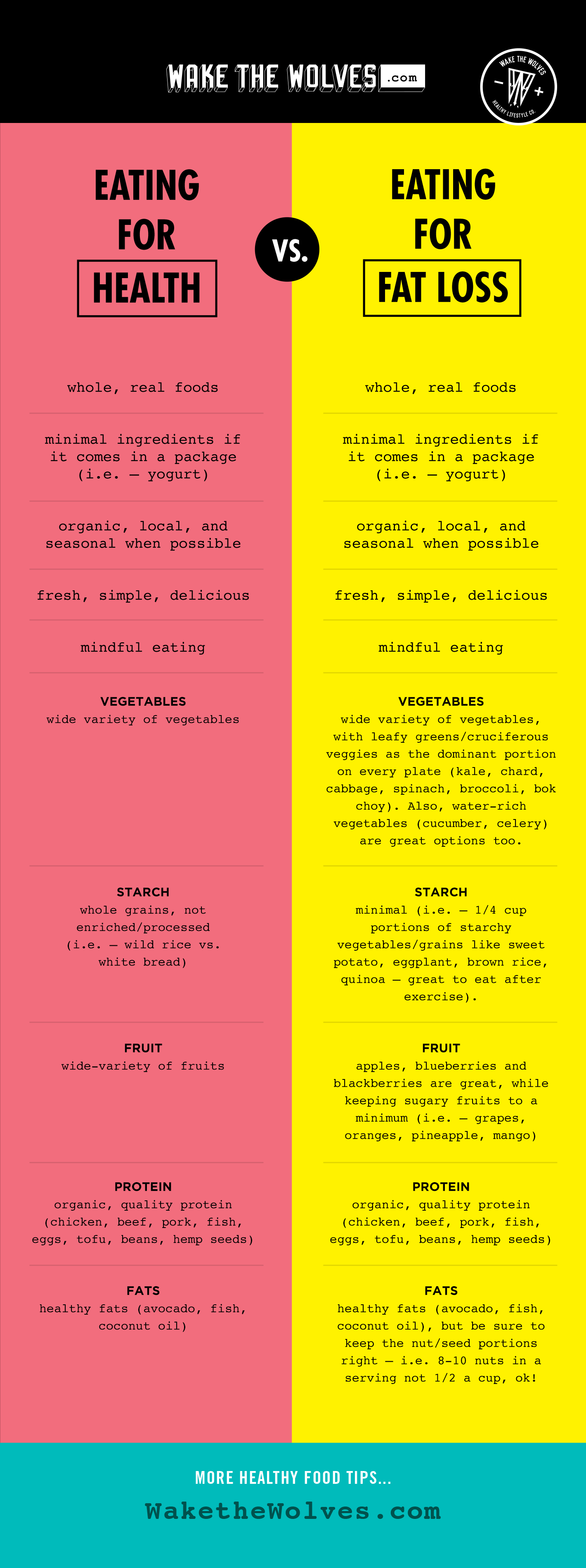
More on healthy portion sizes here.
Ultimately if your goals are to decrease some excess poundage, you want to look towards reducing your sugar/starchy intake, increasing fibrous greens, and enjoying quality protein. All the while referencing the “whole-istic” list above.
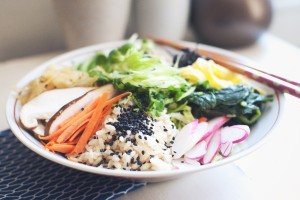 To dive right in, take a look at this CLEAN & LIGHT SUSHI BOWL recipe. It gives you a great idea for portion size in a creative, festive, and fun sort of way. Enjoy.
To dive right in, take a look at this CLEAN & LIGHT SUSHI BOWL recipe. It gives you a great idea for portion size in a creative, festive, and fun sort of way. Enjoy.
Oh and if you are in need of some extra inspiration, check out our latest book: “Kale. All Day. Err Day.” (enhanced for the iPad edition now available).
Kale. All Day. Err Day.
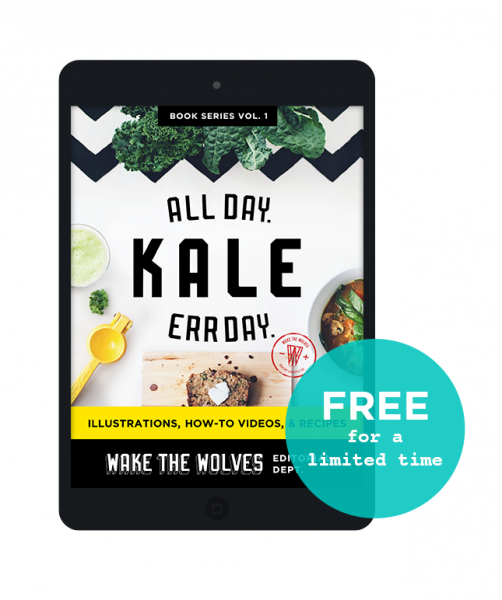
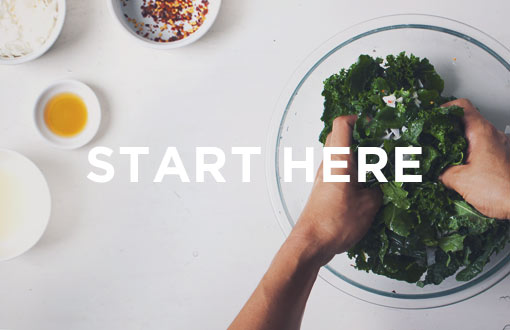
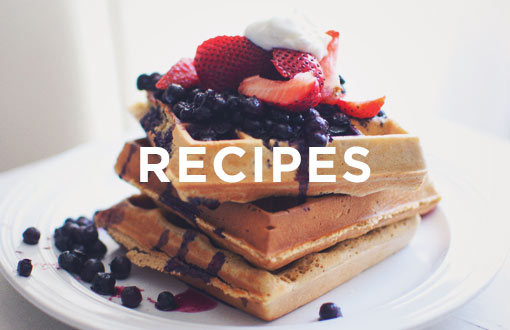
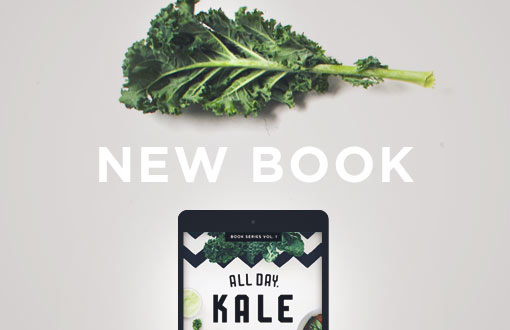




Thanks for another great reminder! I’m going to the Farmer’s Market to buy kale now.
What about dairy? is low fat dairy such as part skim mozzarella an okay part of a weight loss plan?
Hi Ashley! Super awesome question. Ok, here’s my take on “low fat” dairy, especially when it comes to a fat loss plan. I can go on and on about this, but I’ll keep this answer concise and to the point.
The hype about “low fat” dairy started in the 1950’s when there was concern about saturated fats in animal-based foods. Essentially a “man made process” was created to reduce the fat molecules of the dairy product, hence lowering the saturated fat content and thus the calories.
Unfortunately, when fat is removed from dairy, flavor and texture are removed too. As a result, you can often find artificially added ingredients to make up for the missing flavor. For example, in many low-fat or fat-free cottage cheese, yogurt, and milk, you can find added sugar, starches, or thickeners. The next time you go to the store, flip over some full-fat and fat-free/low-fat options and compare: 1) ingredients; and 2) sugar contents. You most likely will find lower calories in fat-free/low-fat options, but the sugar content will be much higher and the end product is less clean (meaning more processed ingredients added). And SUGAR is killer for any fat-loss goals, so you’d want to stay away from that.
Full-fat dairy shouldn’t be a scary thing. It keeps your cravings low, it slows down the digestion process, and keeps you satiated for a longer period of time. To keep working towards fat loss goals, simply eat full-fat versions but in much lower quantities.
Lastly, there are some exceptions to the rule. GREEK YOGURT and MOZZARELLA are two dairy examples where the 0%, low-fat, or part-skim versions are pretty clean and satisfying – meaning there are no ingredients added to the end product to adjust for flavor. Because of their thick nature with less whey (the liquid byproduct), the protein content is higher, and thus you stay satisfied for longer.
CONCLUSION: So if you absolutely want and need some mozzarella or yogurt in your meals, you can easily choose part-skim and 0% or 2% greek yogurt for a lower calorie, clean option. BE SURE to flip those labels over and read the ingredients for any added junk. Most brands will be ok, but not all.
Hope that helps a bit!
-steph